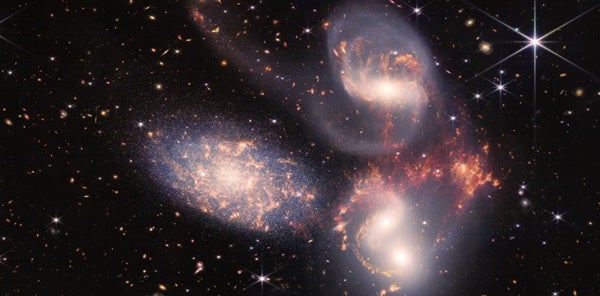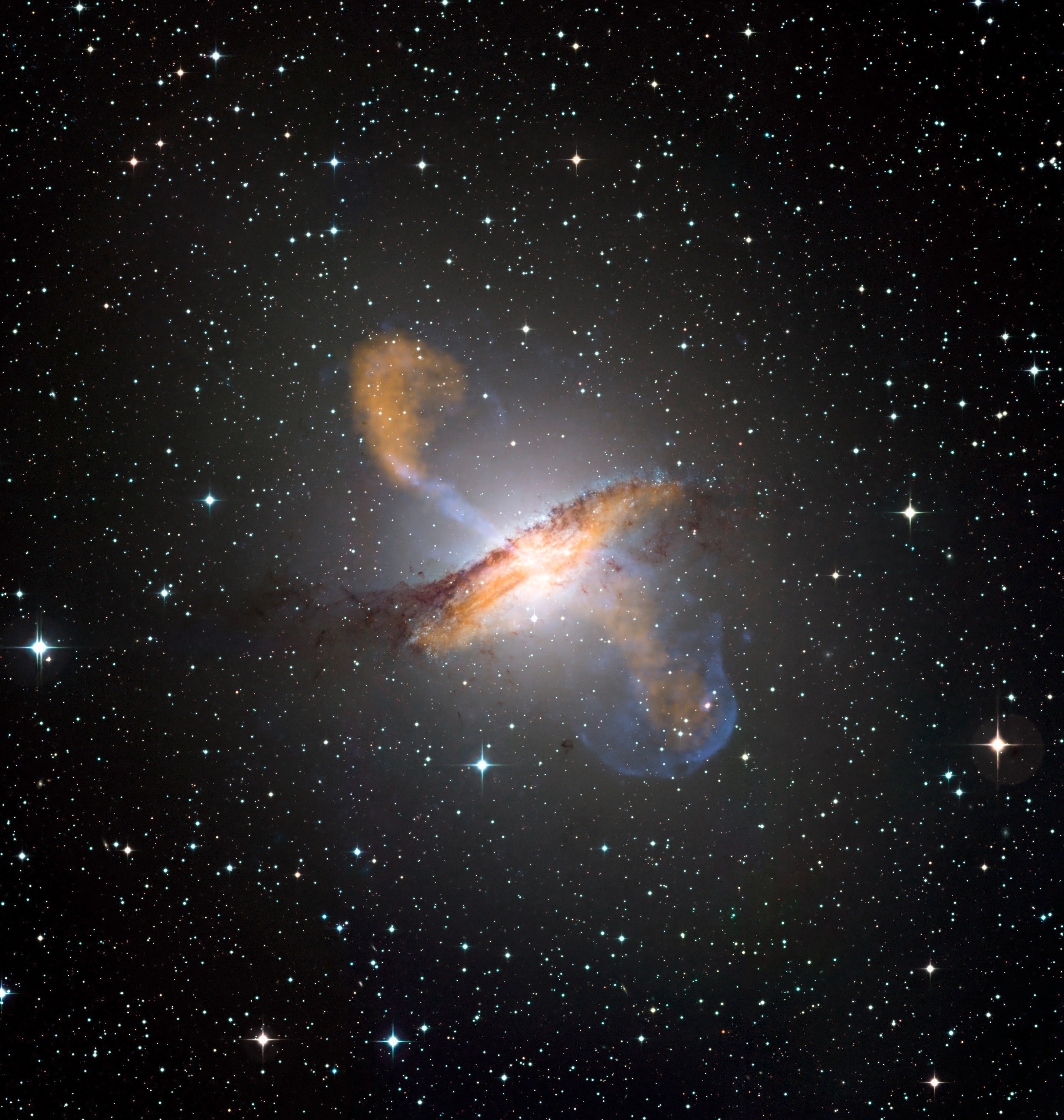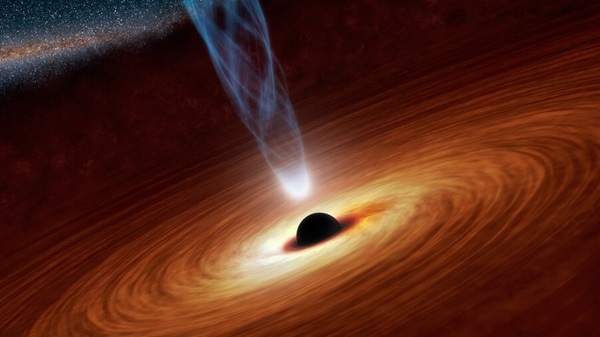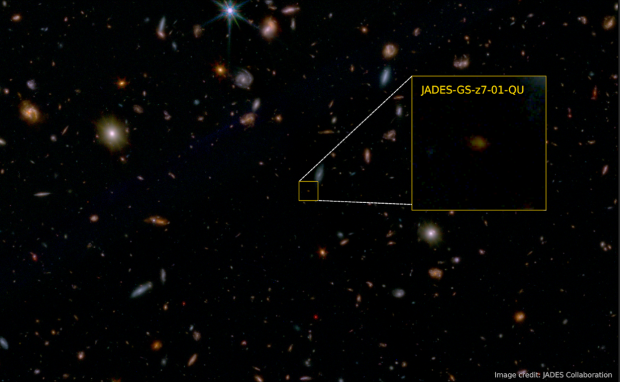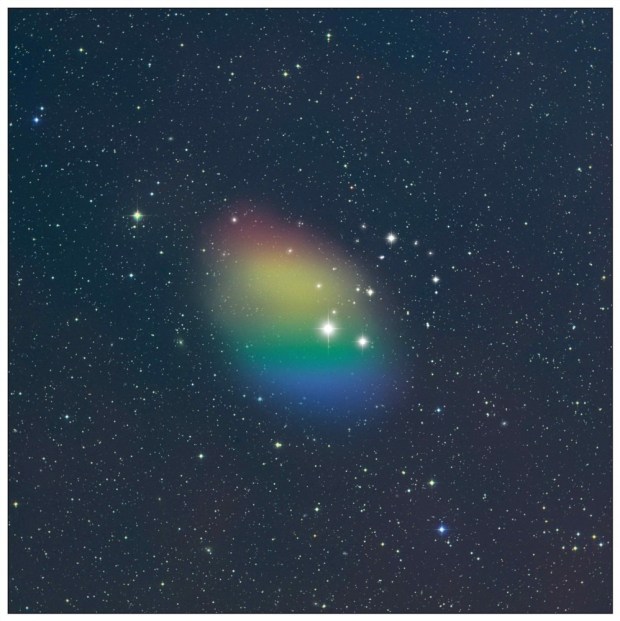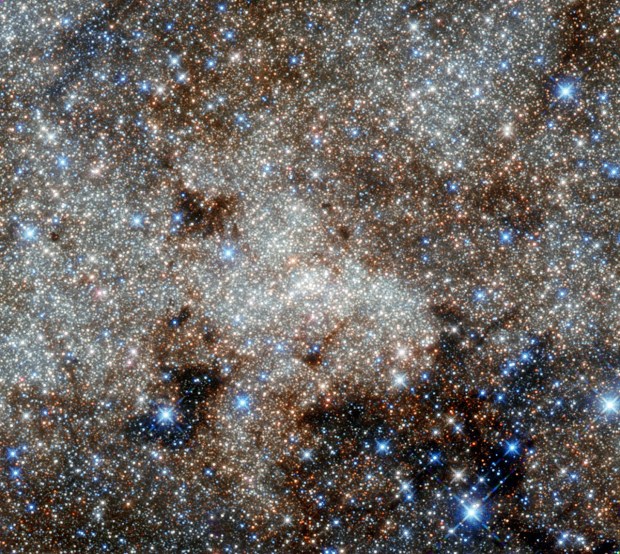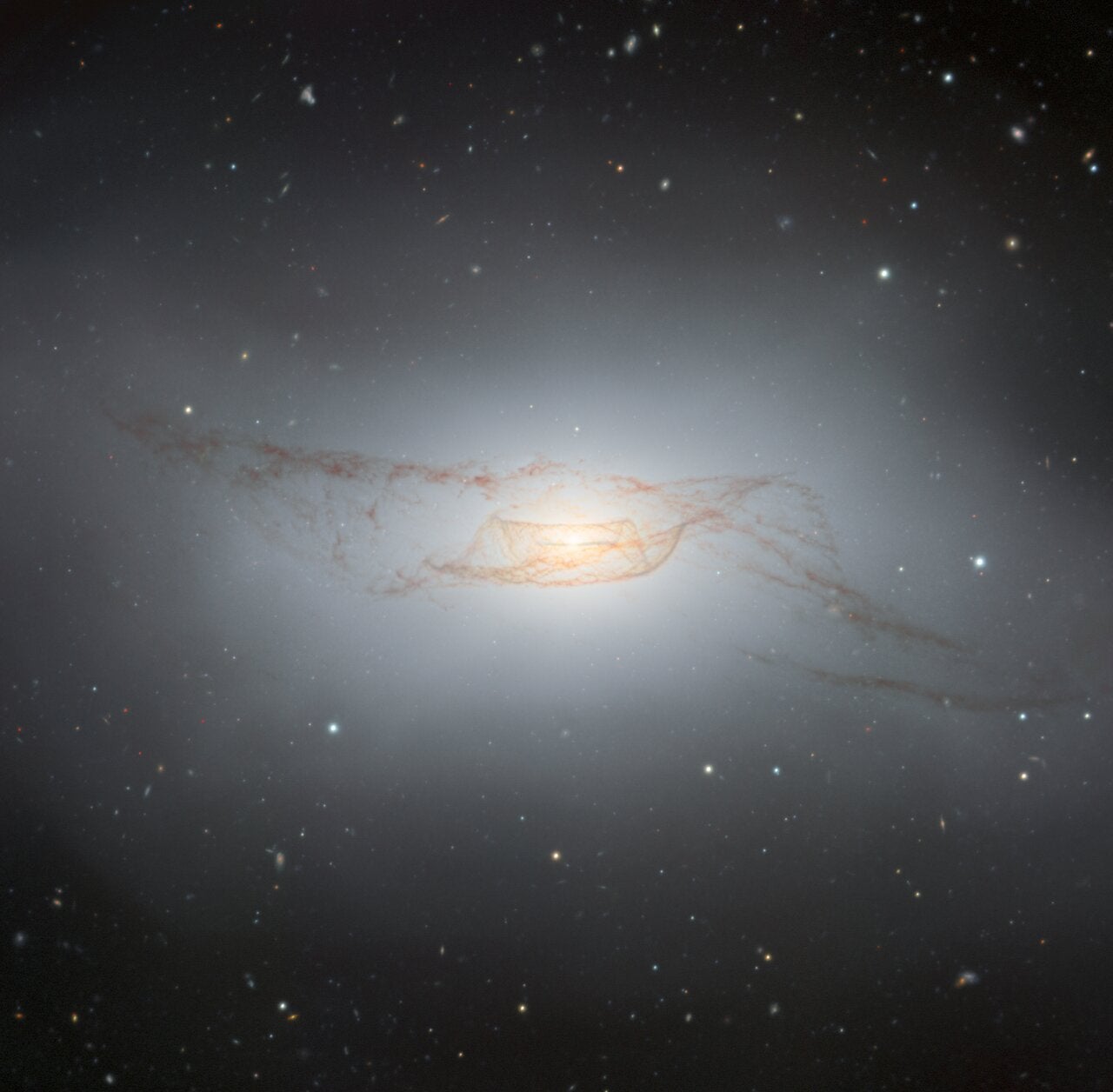Stephan’s Quintet, one of the first science targets of the James Webb Space Telescope, sits just 0.5° southwest of NGC 7331, making it one of the easiest tight groups to find. Halton C. Arp listed this compact group as Arp 319 in his 1966 Atlas of Peculiar Galaxies. Later, he used NGC 7320’s anomalous redshift — much lower than the others’ in the group, indicating it is much closer — to question the validity of redshift as a reliable measure of distance. But Hubble Space Telescope observations dismissed his concerns, as NGC 7320 resolves into stars, while the Quintet’s four other galaxies do not. This proves NGC 7320 is indeed an interloper not physically part of the crowd: NGC 7320 is a small Sb galaxy 39 million light-years away. NGC 7317, NGC 7318A, NGC 7318B, and NGC 7319 are 7.5 times more distant.
NGC 7317 is a magnitude 13.6 E1 elliptical galaxy roughly 1′ across. Magnitude 14.4 NGC 7318A is listed as either Sc or E2, and is a compact 0.9′. It sits behind NGC 7318B. These two are interacting, surrounded by disturbed gas and dust. NGC 7318B is a magnitude 13.9 barred spiral with dimensions of 1.9′ by 1.2′. Hubble photographs show twisted arms rich in HII regions, blue stars, and dark nebulae, particularly along one of its arms, which has been stretched by gravitational interactions.
NGC 7319 is a 14th-magnitude SBbc galaxy whose arms have also been highly disturbed by interactions. It is a type 2 Seyfert galaxy with an energetic core. NGC 7320 is a magnitude 13.6 galaxy spanning 2.2′ by 1.1′. Despite its proximity to the Local Group, it shows little detail beyond a brighter central hub.
Stephan’s Quintet is very small and easy to overlook when scanning around NGC 7331. Telescopes 12 inches and larger — and very dark skies — are ideal to resolve its members and to look for nuclear brightening.
Make sure to explore Astronomy’s full list of 101 cosmic objects you must see. New entries will be added each week throughout 2022.
To get the latest astronomical news and observing content delivered directly to your door, subscribe to Astronomy magazine today!

